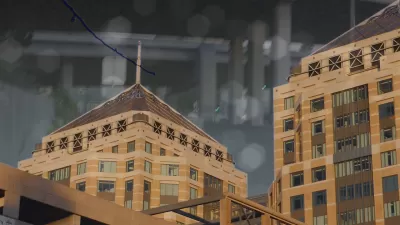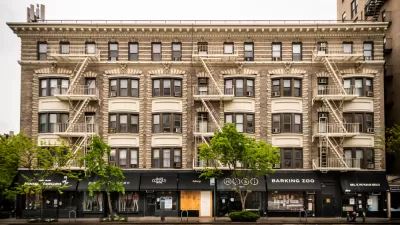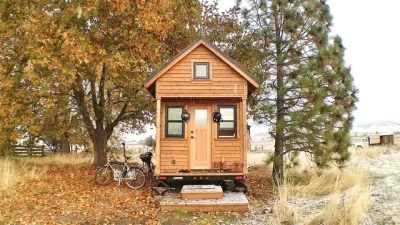The city is experiencing significant growth and development, but it has a complicated history of booms and lags and its civic future is uncertain.

Mitchell Schwarzer takes a closer look at the development history of Oakland, California, through its various booms—starting in the 1920s, then in the 1960s and 2010s, and now reflected in the current construction flurry in downtown Oakland.
While he welcomes the density and vibrancy that will come with the many new residential, hotel, and office buildings, Schwarzer argues that important aspects of the city, as well as its vulnerable residents, are being ignored by civic leaders. "Expanded rail and bus networks, education systems, parks, and civic buildings — active ingredients in earlier times of city-making — are largely absent. The myriad interrelated functions that maintain a public city are being neglected."
Schwarzer grapples with this conflict between Oakland’s new outlook, after periods of neglect when other cities like San Francisco and Berkeley reoriented themselves and flourished, and the rapidly growing problems with homelessness, poverty, and an extreme lack of affordable housing.
These new pricey rentals and condos, to a certain degree, make older housing more available, as they have in the past, he notes. "But it is increasingly common to hear longtime residents voice nostalgia for the days when Oakland was bypassed by global capital flows, when downtown was a dead zone in the dark hours, and cranes were seen only at the Port — when the all-too-gritty reality of the Town kept investors away."
Schwarzer concludes by saying that a plan for affordable housing and a commitment to public investment must be top priorities. He also urges residents who want to live in a modern-day city like Oakland to wake up to the realities:
Most folks oppose suburban sprawl into wild lands and farms. Most enjoy vital urban centers, and understand the need for affordable housing. Most celebrate class and ethnic diversity. Yet the NIMBY attitude spawned in the era of overreaching public projects remains powerful. It is simply not possible to have it both ways, attaining cosmopolitan complexity while enjoying what amounts to a suburban-style life.
The San Francisco Bay Area has experienced astounding economic growth, says Schwarzer, and he wants cities like Oakland to affirm the public city—one that is dense, equitable, and focused on the needs of all residents—rather than supporting privatization and economic and social exclusion.
FULL STORY: Privatizing the Public City

Planetizen Federal Action Tracker
A weekly monitor of how Trump’s orders and actions are impacting planners and planning in America.

Congressman Proposes Bill to Rename DC Metro “Trump Train”
The Make Autorail Great Again Act would withhold federal funding to the system until the Washington Metropolitan Area Transit Authority (WMATA), rebrands as the Washington Metropolitan Authority for Greater Access (WMAGA).

The Simple Legislative Tool Transforming Vacant Downtowns
In California, Michigan and Georgia, an easy win is bringing dollars — and delight — back to city centers.

The States Losing Rural Delivery Rooms at an Alarming Pace
In some states, as few as 9% of rural hospitals still deliver babies. As a result, rising pre-term births, no adequate pre-term care and "harrowing" close calls are a growing reality.

The Small South Asian Republic Going all in on EVs
Thanks to one simple policy change less than five years ago, 65% of new cars in this Himalayan country are now electric.

DC Backpedals on Bike Lane Protection, Swaps Barriers for Paint
Citing aesthetic concerns, the city is removing the concrete barriers and flexposts that once separated Arizona Avenue cyclists from motor vehicles.
Urban Design for Planners 1: Software Tools
This six-course series explores essential urban design concepts using open source software and equips planners with the tools they need to participate fully in the urban design process.
Planning for Universal Design
Learn the tools for implementing Universal Design in planning regulations.
Smith Gee Studio
City of Charlotte
City of Camden Redevelopment Agency
City of Astoria
Transportation Research & Education Center (TREC) at Portland State University
US High Speed Rail Association
City of Camden Redevelopment Agency
Municipality of Princeton (NJ)





























